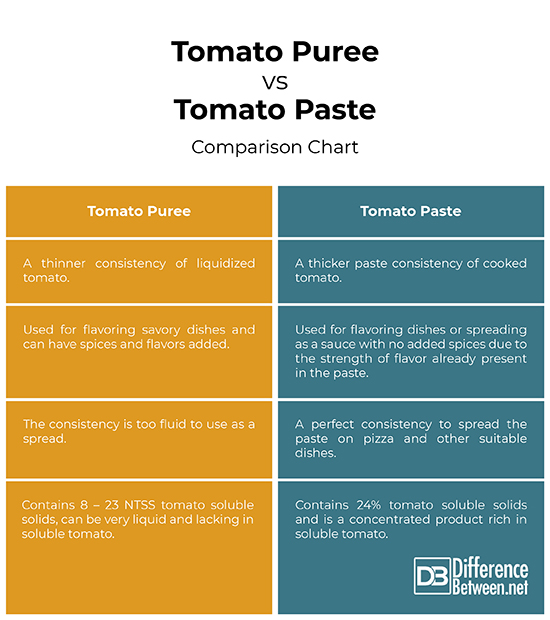
Difference Between Tomato Puree and Tomato Paste Difference Between
Tomato paste is a concentrated paste that needs to be spooned or squeezed out of a container. Tomato purée is thinner and more liquid, like a blended sauce. Tomato puree is sometimes made of a mixture of tomato paste and water, while paste can be made from reduced purée. One is sweeter than the other. Tomato paste has a milder and sweeter.

Tomato Puree vs Paste vs. Sauce, Fully Explained Gardening Channel
Flavors. Both tomato paste and puree have a tomato flavor, just like you would imagine. However, the paste has a more robust flavor and does not have other flavors or spices added to it. The natural soluble solids (NTSS) content of the two is also different. The puree has 8-23% NTSS, while tomato paste has 24% NTSS.
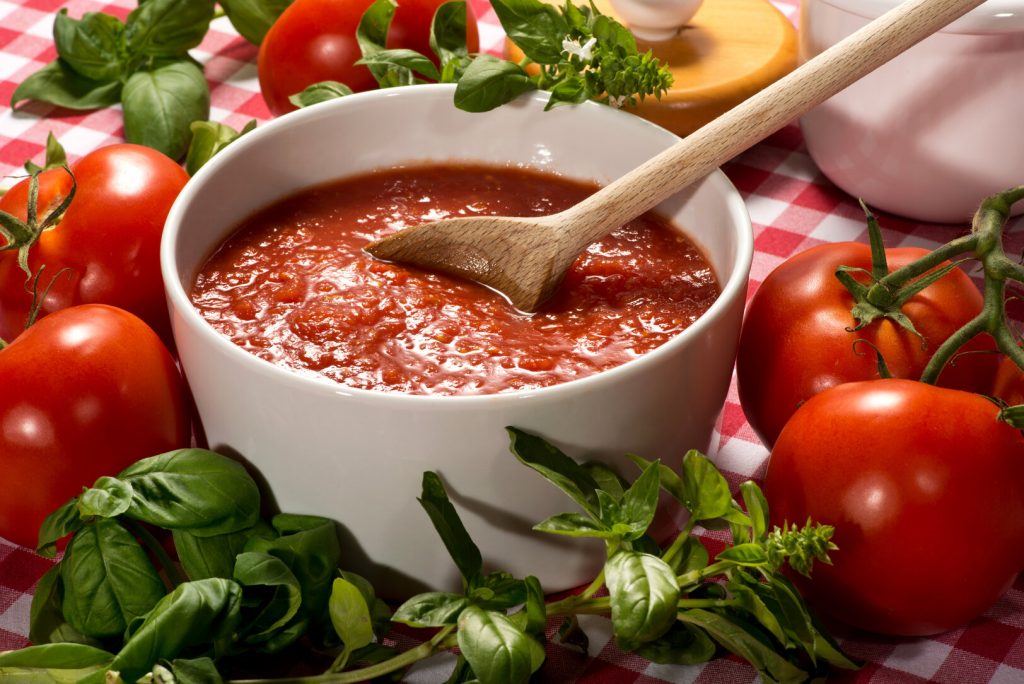
Tomato Puree vs. Paste Which to Use in Cooking
Tomato puree is a smooth and thick liquid made by cooking and blending tomatoes. On the other hand, tomato paste is a concentrated, thick, and smooth paste made by cooking and straining tomatoes to remove the seeds and skin. The texture of tomato paste is similar to that of toothpaste, while tomato puree is more liquid and easier to spread.

Tomato Puree vs Paste Key Difference
1. Combine tomatoes, tomato paste, wine, eggplant, onion, garlic, oregano, and ½ teaspoon salt in a 5-quart slow cooker; cover and cook on low 4 hours or until eggplant is soft and sauce is thick. 2. Just before sauce is done, bring a large pot of salted water to boil over high heat. Add pasta, and cook until al dente, about 10 minutes.
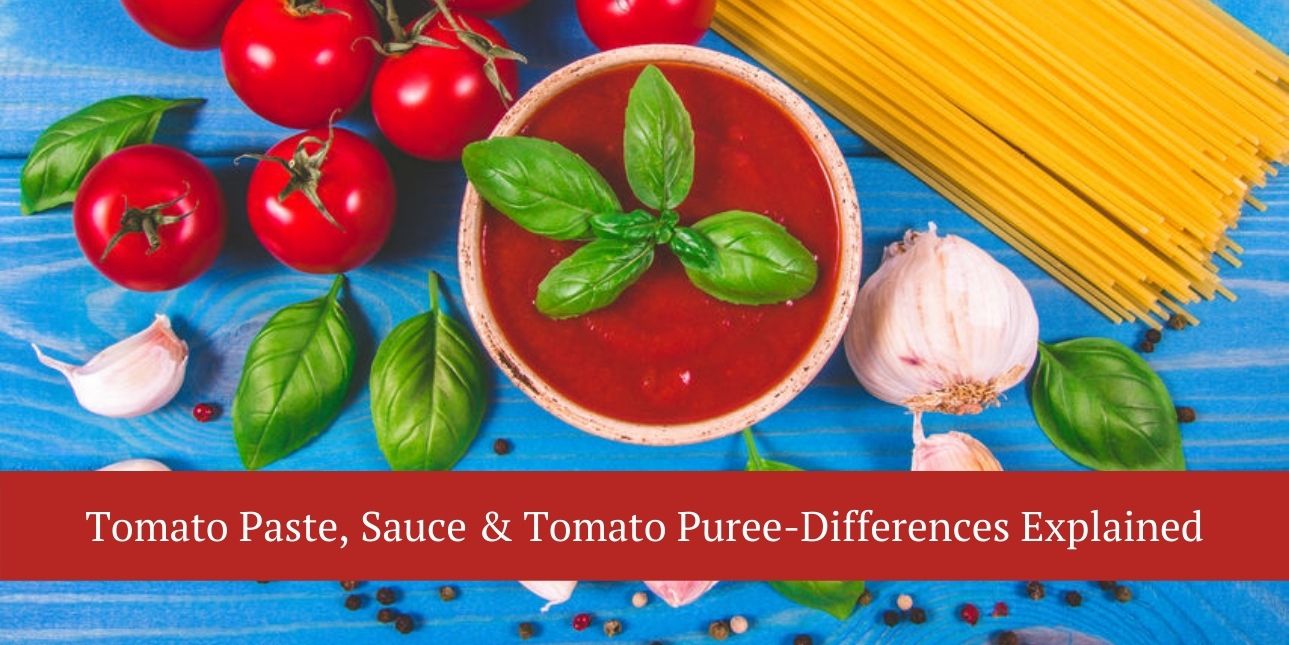
Tomato Paste, Sauce & Tomato PureeDifferences Explained Blog Commercial Refrigerators
Most of the time, yes. If it's a small amount, it's perfectly fine to do a 1-to-1 swap. Tomato puree is thicker than most canned tomato sauces, so you can water the puree down, 1 tablespoon at a time, to reach a saucy texture. Adding seasonings such as onion, garlic, basil, oregano, and salt to tomato puree can make it a bright, quick and easy.
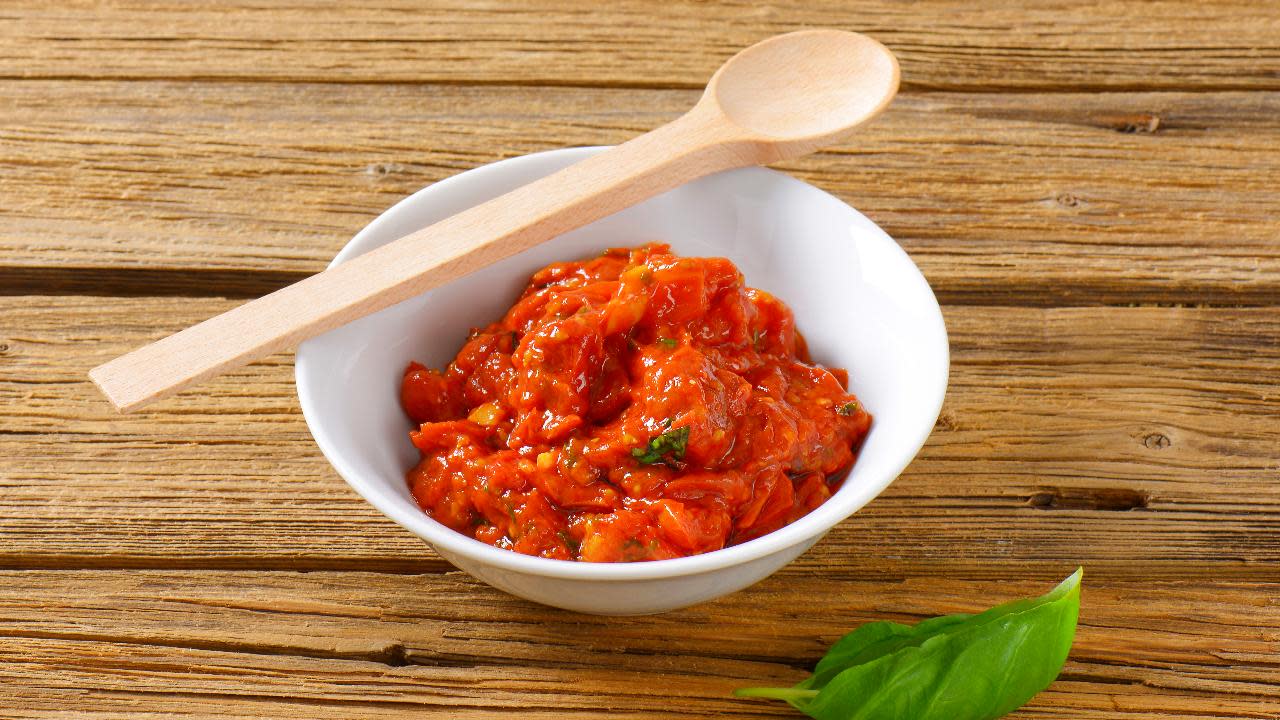
Tomato Purée vs. Tomato Paste What's the Difference?
Pro Tip: When substituting tomato paste for tomato purée, use one tablespoon of paste and one cup of water to create a similar flavor profile. Ultimately, the flavor profile of tomato purée vs. paste depends on the recipe and personal preference. Understanding their differences enables you to make informed decisions when selecting the ideal.

Tomato Puree vs Paste vs. Sauce, Fully Explained Gardening Channel
As we've discussed, the main differences between each of these tomato products comes down to the consistency. Tomato sauce is the thinnest, with tomato puree in the middle, and tomato paste is thickest due to the long cooking time. Tomato sauce may also have added seasonings that the paste and puree don't have.

Tomato Puree vs Paste How Do These Two Differ? Fanatically Food
Often sold in six or twelve ounce cans. Pureee - cooked tomatoes that have been--well--pureeed, but are mostly at their natural density; also called crushed tomatoes. Sauce - cooked down, strained tomatoes, a little thicker than tomato soup. May include herbs, spices, or some flavoring in addition to pure tomato product.
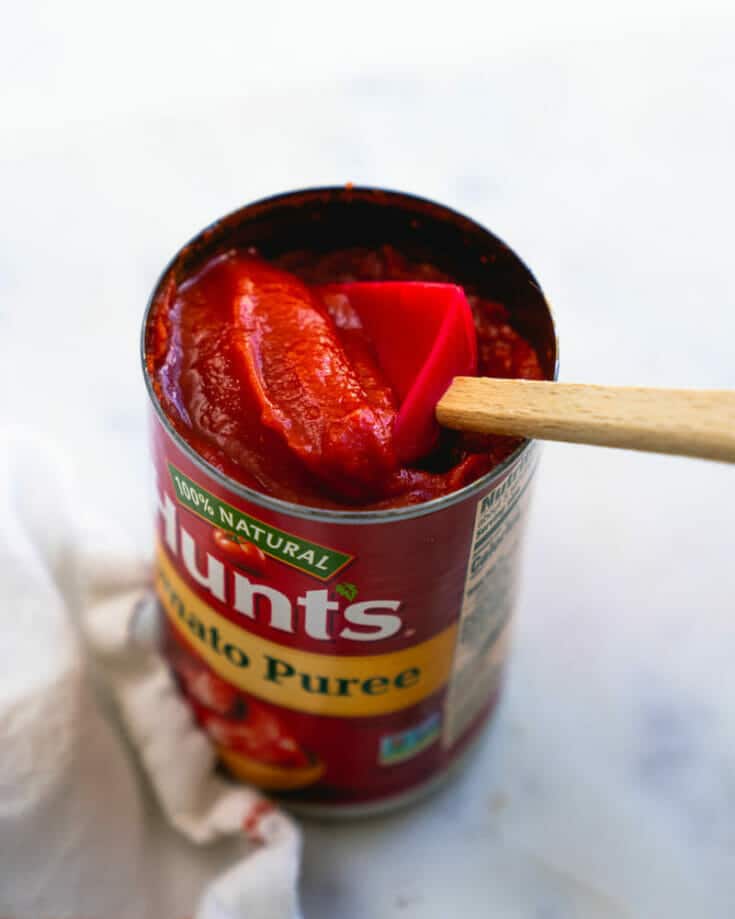
Tomato Puree vs Paste A Breakdown! A Couple Cooks
Tomato puree is a canned sauce made of cooked, strained tomatoes. It has a thinner consistency than tomato paste. In fact, for many brands it's actually made with tomato paste and water! It's usually sold in 10 to 15-ounce cans. Tomato paste is a very thick paste of tomatoes that's even more concentrated than tomato puree.
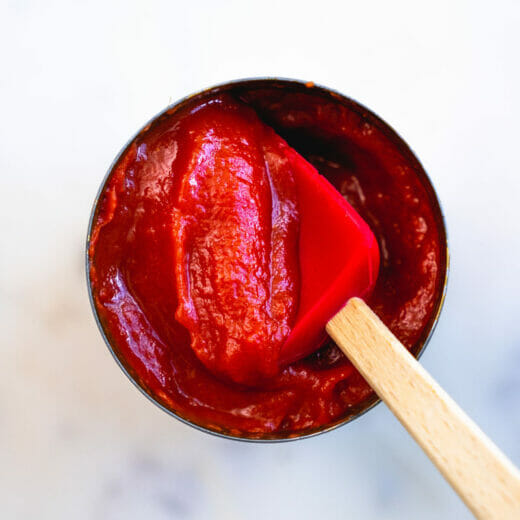
Tomato Puree vs Paste A Breakdown! A Couple Cooks
According to MasterClass, the trick is remembering the 1:3 ratio. If you need one tablespoon of tomato paste, add three tablespoons of tomato purée to a saucepan and cook until it turns into a.
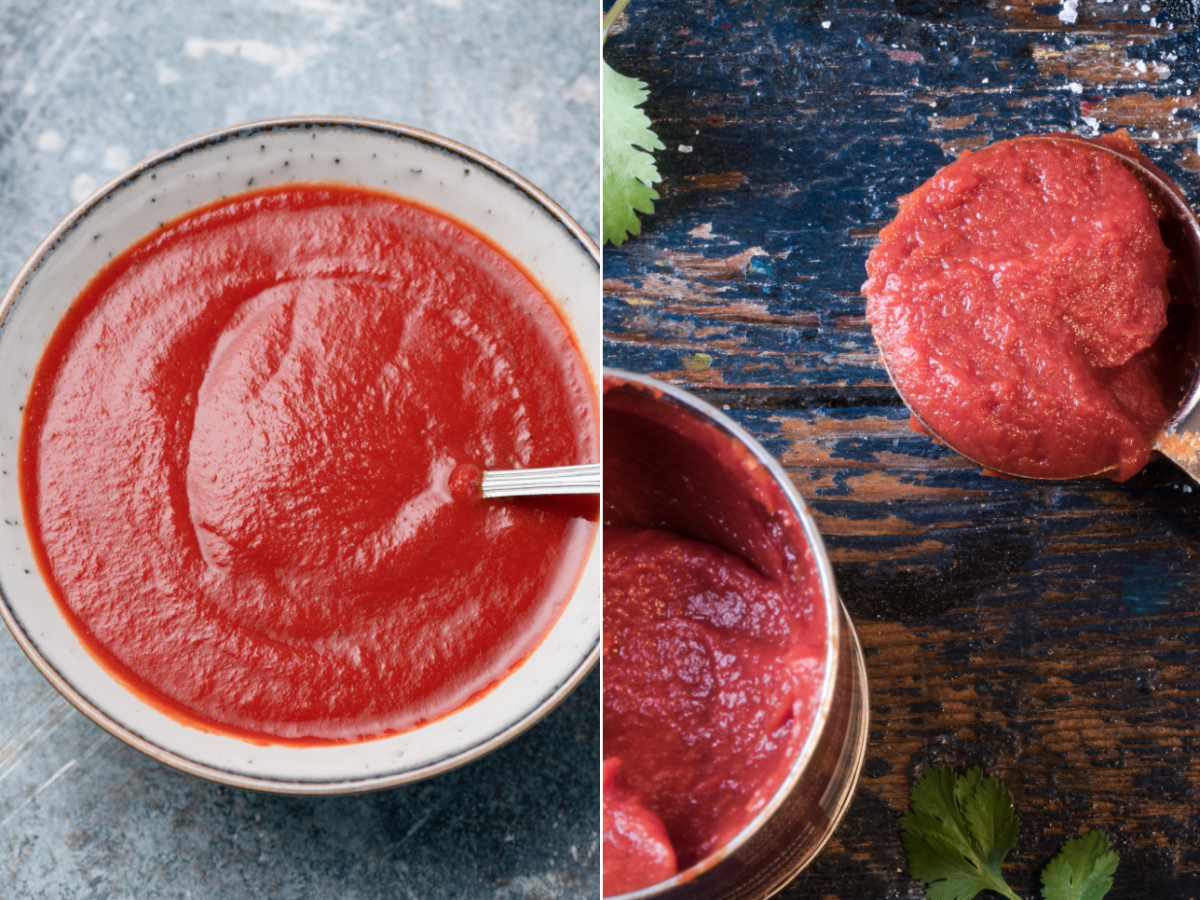
Tomato Purée vs. Tomato Paste What's the Difference?
Tomato puree is a blended form of tomatoes offering a milder taste resembling fresh tomatoes, while tomato paste is concentrated tomatoes with a sweeter and richer flavor. Substituting one for the other in your recipes is easy—simmer tomato puree to lower its water content to make a tomato paste, and add water or broth to it to make a puree.

is tomato puree the same as tomato paste or not+The purchase price Arad Branding
According to Masterclass, mixing equal parts water and tomato paste will create a suitable tomato puree. They also recommend using tomato puree in a 3:1 ratio to the paste to substitute. If a.

Tomato Puree vs Paste Key Difference
This paste is commonly used as a thickening agent for sauces, soups, stews, or in ground meat dishes like chili. Given their differences, tomato paste and puree are not interchangeable in their.
:max_bytes(150000):strip_icc()/Tomato-Puree-vs-Tomato-Paste-2x1-1-11d962c0f7a74729a3892f20bfae961a.png)
Tomato Purée vs. Tomato Paste What's the Difference?
Because of the longer boiling time, tomato paste has a deeper flavor than tomato purée. The longer the product remains on the heat, the more concentrated the flavors get, culminating in a product that tastes like a dried tomato. Tomato purée, however, has a sweeter, milder, and more natural tomato flavor. Uses.
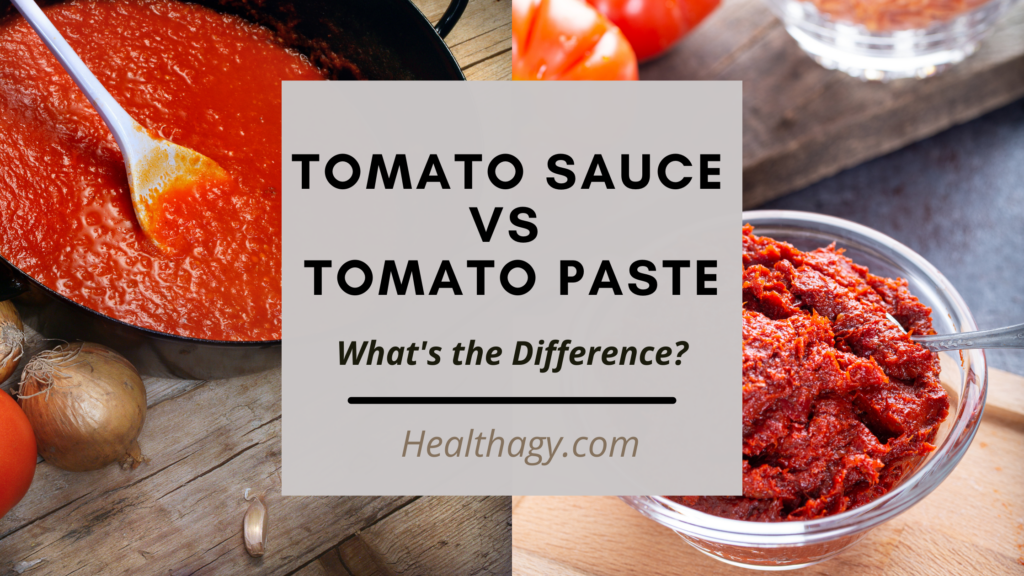
Tomato Sauce Vs Tomato Paste What is the Difference? Healthagy
Made from crushed or whole tomatoes. Made from stewed tomatoes that have been strained to remove the seeds and skins. Texture and flavor. Smooth, thick liquid, but slightly thinner consistency than paste Less acidic than tomato paste. Much more concentrated than puree Has a deeper flavor as a result.
:max_bytes(150000):strip_icc()/difference-between-tomato-paste-and-tomato-puree-2000-f38d581b993e4ce99e2e2e51c823d589.jpg)
Tomato Purée vs. Paste What's the Difference?
Depending on the brand and amount, a 29-ounce can of tomato puree ranges between USD 1.66 to 2.00. Meanwhile, a 24-ounce jar of paste costs USD 8.45 to 10.00. It's easy to understand why the latter is more expensive as it requires longer cooking hours. Plus, making it involves more steps and more tomatoes.